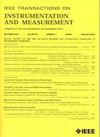A High-Efficiency Self-Powered Wireless Sensor Network Driven by Ambient RF Energy Far-Field
IF 5.6
2区 工程技术
Q1 ENGINEERING, ELECTRICAL & ELECTRONIC
IEEE Transactions on Instrumentation and Measurement
Pub Date : 2025-04-04
DOI:10.1109/TIM.2025.3552865
引用次数: 0
Abstract
Wireless self-powered systems based on RF energy harvesting (RFEH) have emerged as an effective solution to the energy challenges in Internet of Things (IoT) devices. However, two critical challenges still persist: low energy-harvesting efficiency at the receiver under low power conditions typical of long-distance scenarios, and the power range of RFEH not being suitable for most low-power IoT applications. To solve these problems, we proposed a high-efficiency RFEH system with a wide input power range and high sensitivity. We employed harmonic suppression technology to mitigate higher-order harmonics generated by diodes and used radial stubs instead of capacitors and inductors to reduce insertion losses and parasitic effects. The proposed rectifier achieves a peak power efficiency of 74.4% at 9.5 dBm. Efficiency remains above 50% in the input power range of −8–15.5 dBm and exceeds 70% between 2.5 and 11.5 dBm. Even at −14 dBm, a power conversion efficiency (PCE) of 30% is maintained, significantly improving the efficiency of RFEH. Building on this RFEH system, we propose a dual-mode self-powered wireless sensor network system. Experimental results demonstrate that the low-power mode can operate up to 6 m away and have a minimum sensitivity of −10 dBm. The high-power (7 mW) mode can continuously monitor strain information for over 4.5 h at 1 m. This system provides a solution for the widespread application of IoT in the future.基于环境射频能量远场驱动的高效自供电无线传感器网络
基于射频能量收集(RFEH)的无线自供电系统已经成为解决物联网(IoT)设备能量挑战的有效解决方案。然而,仍然存在两个关键挑战:接收器在低功耗条件下的低能量收集效率,以及RFEH的功率范围不适合大多数低功耗物联网应用。为了解决这些问题,我们提出了一种具有宽输入功率范围和高灵敏度的高效率RFEH系统。我们采用谐波抑制技术来减轻二极管产生的高次谐波,并使用径向存根代替电容器和电感来减少插入损耗和寄生效应。所提出的整流器在9.5 dBm时达到74.4%的峰值功率效率。输入功率在−8 ~ 15.5 dBm范围内效率保持在50%以上,在2.5 ~ 11.5 dBm范围内效率超过70%。即使在−14 dBm时,功率转换效率(PCE)也保持在30%,显著提高了RFEH的效率。在此基础上,提出了一种双模自供电无线传感器网络系统。实验结果表明,低功耗模式可以工作在6 m外,最小灵敏度为−10 dBm。高功率(7 mW)模式可以在1米的高度连续监测应变信息超过4.5小时。该系统为未来物联网的广泛应用提供了解决方案。
本文章由计算机程序翻译,如有差异,请以英文原文为准。
求助全文
约1分钟内获得全文
求助全文
来源期刊

IEEE Transactions on Instrumentation and Measurement
工程技术-工程:电子与电气
CiteScore
9.00
自引率
23.20%
发文量
1294
审稿时长
3.9 months
期刊介绍:
Papers are sought that address innovative solutions to the development and use of electrical and electronic instruments and equipment to measure, monitor and/or record physical phenomena for the purpose of advancing measurement science, methods, functionality and applications. The scope of these papers may encompass: (1) theory, methodology, and practice of measurement; (2) design, development and evaluation of instrumentation and measurement systems and components used in generating, acquiring, conditioning and processing signals; (3) analysis, representation, display, and preservation of the information obtained from a set of measurements; and (4) scientific and technical support to establishment and maintenance of technical standards in the field of Instrumentation and Measurement.
 求助内容:
求助内容: 应助结果提醒方式:
应助结果提醒方式:


